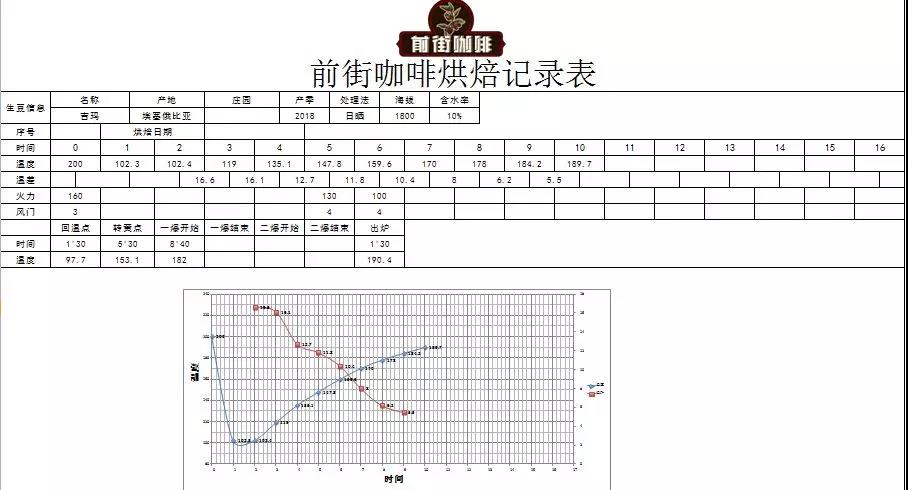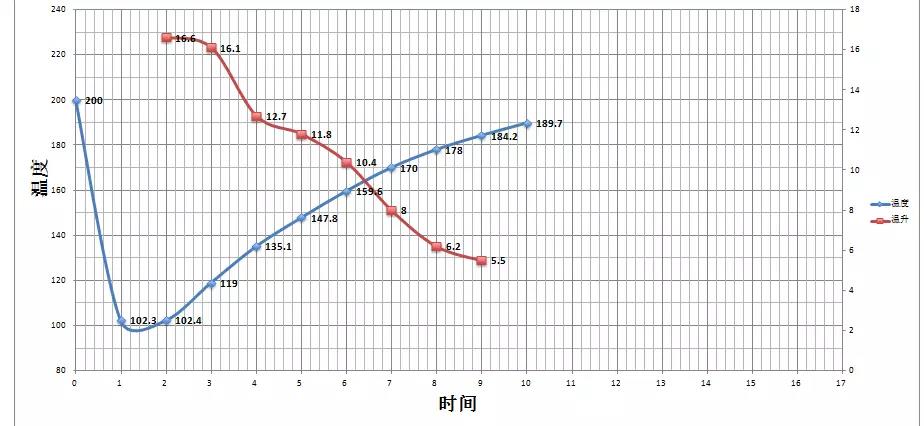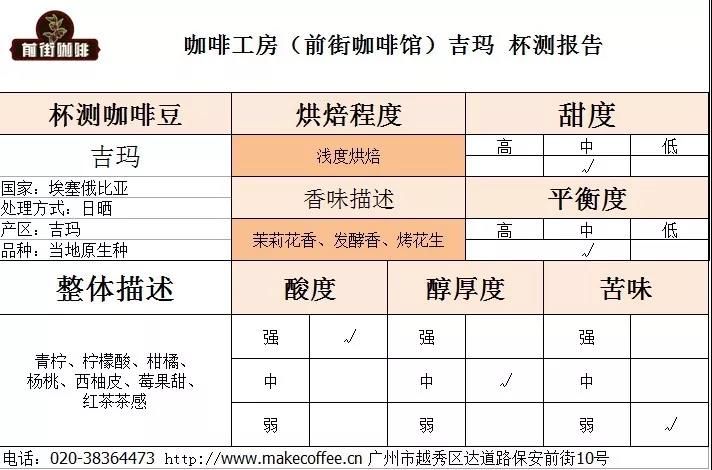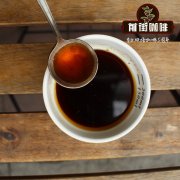Ethiopian Gemma | from Ethiopia, the birthplace of coffee, the ancient sun beans
[Gemma, Ethiopia]
Country: Ethiopia
Production area: Gemma Djimma
Altitude: 1800m
Treatment: insolation
Variety: native species

| 01 | production area description |

Ethiopia is the birthplace of coffee. Legend has it that an unknown shepherd discovered this mysterious red fruit, which has been selling so far, while herding sheep in the forests of western Ethiopia: coffee, which has opened the coffee market for thousands of years. Ethiopia is still a very important coffee exporter in the world, with the main producing areas of Sidamo Sidamo, Yegashefi Yirgacheffe, Cochel Kochere, Hara Harar and Gemma Djimma.
Djimma coffee grows in the Illubabor and Kaffa regions of Ethiopia, between 1340 and 1830 metres above sea level, and produces and exports about 60, 000 tons of coffee each year. Djimma is also known as Jimma Coffee.
Djimmah coffee tends to grow between 1340 and 1830 meters above sea level, which provides an ideal climate for coffee growth, and plants can also be protected by forest trees from the noon sun, which also helps maintain moisture in the soil.
The town of Djimmah is actually quite small, but Djimmah coffee accounts for most of Ethiopia's coffee exports, accounting for almost 50%.

Coffee producers near Djimma are almost always small farmers. Coffee here is raised in a traditional way, using natural processes (solarization), and the Ethiopian Government specializes in issues such as determining the price of coffee purchased by factories from farms under the guise of the Coffee and Tea Authority. This is a legacy of the nationalization plan, which turns coffee factories in all countries into farmers' cooperatives. All coffee production in Ethiopia, whether grown or processed, is now strictly licensed by the Coffee and Tea Authority.
02 | introduction to the handling method

It is said that tanning is the oldest way to deal with it, and it is also one of the simplest and least utensils needed.
1. It is necessary to screen the floating beans in the water, so that the immature coffee beans float naturally due to the buoyancy of the water, while the coffee beans that sink are full and unproblematic. At the same time, simply clean the surface dirt of coffee fruit, remove leaves and miscellaneous branches, so as not to cause mildew and miscellaneous smell when exposed to the sun. Choose a flat clearing with easy access to the sun.
2, smooth the coffee fruit, do not overlap, too dense stacking as far as possible, otherwise it is easy to breed bacteria to cause mildew, need to stir many times a day, according to the weather condition to increase or decrease the exposure time, usually takes about two to three weeks, the accurate detection standard is: open the pulp, detect coffee bean water content less than 12%. In the process of stirring, remember to pick out fallen leaves and insects to avoid defects such as worms and beans. Coffee beans are usually black and red at this time.
3. It takes about a month to remove the sun-dried peel and pulp and store them in the old warehouse with a shell to make the taste thicker and more precipitate. in modern times, most of them use machines instead of handworks. however, there are still some backward areas and small farmers who use blunt objects to knock on the peel. It is recommended to use a machine to remove it, which can reduce the damage to the integrity of the coffee bean itself. Chen Cang remembers to choose a dry place that does not come into contact with the sun.
03 | Analysis of raw beans

Arabica coffee originates from Ethiopia in Africa. Up to now, there are hundreds or thousands of wild coffee species in Ethiopia, even growing in primeval forests all the year round. There are no number of native varieties that have been mixed, mutated and hybridized in the ground. This local hybrid is called Arabica gene pool, and the native species produced in Ethiopia is called ancient superior native species (Heirloom).

Nearly 2000 coffee varieties have been recorded in Ethiopia, including 1927 native varieties and 128 imported varieties. So just by looking at the appearance, Esther's coffee variety is "Grand View Garden", which has everything, long, short, thin, fat.
04 | Baking analysis

Beans with such a gorgeous flavor are certainly not suitable for deep baking, so the shallow slow roasting method of this coffee can best reflect its round and sweet, rich flower and fruit aromas.
This coffee has relatively small particles, high moisture content, high heat absorption in the baking process, and the Mena reaction process is relatively fast.

Put the furnace temperature to 200 degrees Celsius, adjust the firepower to 160 degrees after opening the throttle for 1 minute, keep the throttle unchanged, adjust the firepower once to 130 degrees, open the throttle to 4 degrees, bake to 5: 30 ", the bean watch turns yellow, the smell of grass disappears completely, dehydration is completed, the firepower is adjusted to 100 degrees, the throttle remains unchanged 4.
Ugly wrinkles and black markings appear on the bean surface at 7 degrees 39 and 50, and the smell of toast obviously changes to the smell of coffee, which can be defined as a prelude to an explosion. At this time, listen carefully to the sound of an explosion, start exploding at 8: 40 ", adjust the firepower to 50 degrees Celsius, the throttle should be fully opened (adjust the firepower to be very careful, not so small as to be free of bursting sound), and put in the pot at 190.4 degrees.

Although this bean is sun-treated, it has a bright sour quality. Dry aromas of jasmine, with aromas of roasted peanuts, wet aromas of fermented wine, acidity of lime, lemon, citrus and carambola, sweet berries in the middle, and some grapefruit peel and black tea at the end.
05 | Cooking analysis

Recommended cooking method: hand flushing
Degree of grinding: 3.5 (Japanese little Fuji R440)
V60 filter cup, 15g powder, water temperature 90 degrees, grinding 3.5.The ratio of water to powder is close to 1:15
Steaming in 30 grams of water for 30 seconds
Section: water injection to 130g water cut off, slow water injection to 225g
That is, 30-130-225
It smells of virgin fruit with a hint of fermented wine, with notes of lime, citrus and grapefruit peel on the palate.

Important Notice :
前街咖啡 FrontStreet Coffee has moved to new addredd:
FrontStreet Coffee Address: 315,Donghua East Road,GuangZhou
Tel:020 38364473
- Prev

Illustration | you need a guide to making layered latte coffee suitable for making latte beans
There is a common sense that if you want to make a beautiful latte, you should pour the milk into the espresso, not the other way around. But what happens the other way around? This makes another kind of latte: layered latte (layere)
- Next

Introduction of Kenyan Coffee Flavor introduction of Kenya Water washing Qiliya Gachimenti treatment Plant
Professional coffee knowledge exchange more coffee bean information please follow the coffee workshop (Wechat official account cafe_style) Kenya is a model country for producing fine coffee beans. Coffee was introduced from Britain in 1900, and only traditional Arabica did not have the best bourbon species of SL28 and SL34 in Kenya until 1950. All water treatment methods are collected and AA PLU is graded.
Related
- Detailed explanation of Jadeite planting Land in Panamanian Jadeite Manor introduction to the grading system of Jadeite competitive bidding, Red bid, Green bid and Rose Summer
- Story of Coffee planting in Brenka region of Costa Rica Stonehenge Manor anaerobic heavy honey treatment of flavor mouth
- What's on the barrel of Blue Mountain Coffee beans?
- Can American coffee also pull flowers? How to use hot American style to pull out a good-looking pattern?
- Can you make a cold extract with coffee beans? What is the right proportion for cold-extracted coffee formula?
- Indonesian PWN Gold Mandrine Coffee Origin Features Flavor How to Chong? Mandolin coffee is American.
- A brief introduction to the flavor characteristics of Brazilian yellow bourbon coffee beans
- What is the effect of different water quality on the flavor of cold-extracted coffee? What kind of water is best for brewing coffee?
- Why do you think of Rose Summer whenever you mention Panamanian coffee?
- Introduction to the characteristics of authentic blue mountain coffee bean producing areas? What is the CIB Coffee Authority in Jamaica?

